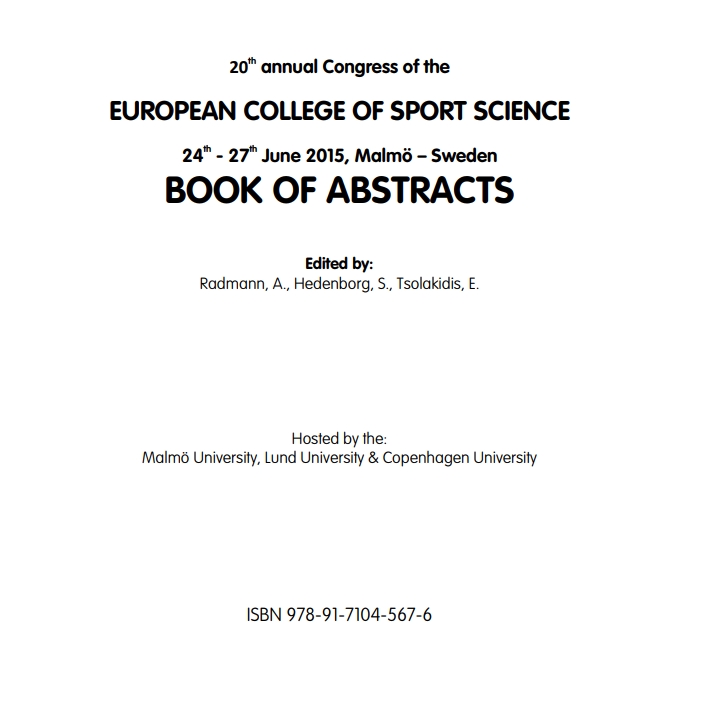Carlomagno D 1, Bosio A1, Morelli A1, Tornaghi M1, Induni M1, Rampinini E1
1, Human Performance Lab, Centro Ricerche MAPEI Sport (Castellanza, Italy)

Automated metabolic gas analysis systems are widespread devices in exercise physiology (Macfarlane, 2001). As a good practice, a brand new device should be tested for validity and reliability and being in good agreement with previous, well known and validated devices. Aim of this study was to compare respiratory data collected using a validated VMAX29 system and a Vyntus CPX. Ten subjects performed a maximal incremental exercise test (25 W·min-1) on a cycle ergometer while respiratory data were simultaneously collected and analyzed using two different devices (VMAX29 and Vyntus CPX). The agreement between the two systems in regards to VO2, VCO2 and VE during the whole test and at exhaustion were investigated through the Intraclass Correlation Coefficient (ICC), coefficient of variation (CV) and Bland and Altman plot (Bland and Altman, 1986). Differences for values at exhaustion were tested by paired t-test. Results During the whole maximal incremental exercise, ICC values for VO2 (0.997), VCO2 (0.996) and VE (0.997) were very high. The typical variation between the two systems, expressed as a CV, was low for all the parameters (1.9% for VO2, 2.4% for VCO2, and 2.0% for VE). Good agreement was confirmed using the Bland and Altman plots: mean bias VO2 -92±105 ml*min-1 (limits of agreement -298 and 105), VCO2 63±106 ml*min-1 (limits of agreement -145 and 271) and VE -1±2 L*min-1 (limits of agreement -5 and 3). At exhaustion, no significant differences were detected between the two systems for VO2 (p=0.241), VCO2 (p=0.793) and VE (p=0.291), nevertheless slightly lower ICCs (0.929, 0.974 and 0.936 for VO2, VCO2 and VE respectively) and higher CVs (3.4%, 3.6%, 2.8% for VO2,VCO2 and VE respectively) were detected. Bland and Altman plots confirmed these tendencies at exhaustion: mean bias VO2 -97±242 ml*min-1 (limits of agreement -571 and 378), VCO2 24±275 ml*min-1 (limits of agreement -516 and 564) and VE -2±5 L*min-1 (limits of agreement -12 and 9). The results of this study showed an overall good agreement between the Vyntus CPX and the widespread VMAX29. The new Vyntus CPX and the VMAX29 gave very similar values for VE while, albeit very small, VO2 was inclined to be higher and VCO2 lower for the Vyntus CPX. In spite of different hardware, O2 analysers (paramagnetic for VMAX and fuel cell for Vyntus) and ventilator transducer (mass flow meter for VMAX29 and turbine for Vyntus), the two devices might be used interchangeably without compromising the consistency of the results.
Book of Abstract 20th Annual Congress of the European College of Sport Science (ECSS). Malmö 24-27th June, 2015, 20-0884